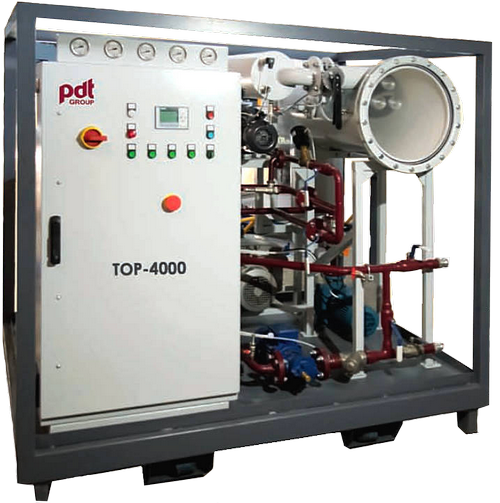OIL CLEANER - OPERATING PRINCIPLE AND CHARACTERISTICS

To date, the issues of profitability of production are paramount. That is why today the processing of secondary raw materials and materials is becoming characteristic, and the recycling of oils, which are very often used for the operation of all kinds of equipment and devices, has become no exception. In order to productively use the used oil, it is first subjected to cleaning. Waste oil is cleaned using special equipment, such as an oil refining unit.
CHARACTERISTICS OF OIL CLEANERS
A standard oil refining unit has a direct purpose for refining oils of various types and purposes, such as machine and transformer oils and other types of industrial oils.
As a rule, either water or foreign solid particles become the main contaminants of oils, so oil refineries have the function of simultaneously removing both water and solid particles from oils. Such installations are quite compact equipment and do not occupy a large space of production space. The main advantages include the fact that the device operates automatically, that is, without a maintenance mode. It is a productive equipment and does not require pre-filtering of the oil before cleaning it. Maintenance costs are quite low.
The productivity of such equipment is about twenty percent of the total amount of oil in one hour of operation of the installation, which is a very high performance indicator. The service life with proper operation of such an installation will be quite long. The main performance indicators of this equipment are such as the continuity of the installation, the system is able to remove particles from the oil, the size of which exceeds 10 microns, the removal of all water, which is freedom in the oil.
DEVICE AND DESIGN OF INSTALLATION FOR CLEANING OILS
Structurally, the unit is made and equipped with such working elements as a separator that removes solid particles, an oil heater, which is an electrical element of the unit, and a feed-type pump. By all means, the entire oil purification plant must be equipped with a special alarm system that is triggered in the event of any malfunctions and accidents. The installation also includes a start-up control of the water seal system. The whole structure is mounted on a base plate and a frame, which can be either stationary or mobile.
The principle of operation of the installation is to perform the following work. Initially, the oil undergoes a separation process in the separator, where solid particles of contaminants are removed. The separation of oils occurs under the action of centrifugal forces into components of the phase type. The place is fed to the separator by means of feed type pumps. The strongest impurities and water are released to the drum periphery, the purified oil is removed from the separator in a continuous mode. For the accumulation of sediments and sludge, there is a special tank from which all kinds of sediments and dirt must be cleaned regularly.
The main technical characteristics of the oil treatment plant are such as power, which, depending on the model, varies from 14 to 48 kW. The power of the installation’s engine itself varies from 1.1 to 5.5 kW. Electrical power can be in the range of 380-440 V AC type. The use of waste oil treatment plants can significantly reduce production costs.
